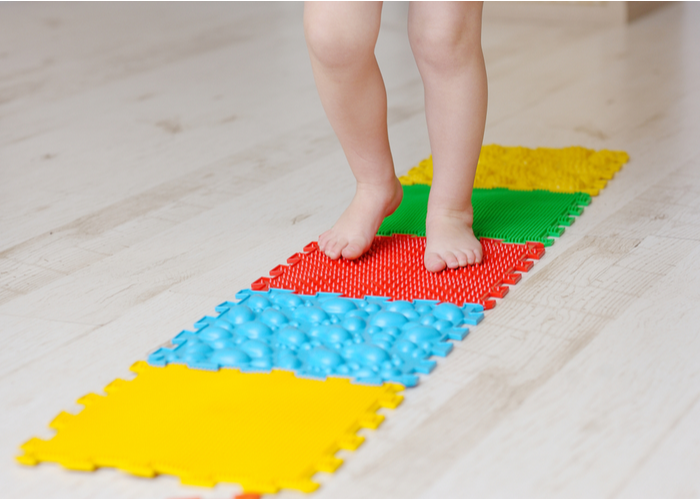
At a glance:
- Gait refers to self-powered locomotion (walking, running, etc)
- Changes in gait may be an indicator of injury or an underlying medical condition
- Changes of gait may be caused by a number of factors ranging from injury to the feet and lower legs to neurological or inner ear issues
What is Gait?
Gait refers to self-powered locomotion - walking, striding and running. While no two people have exactly the same gait - the length of their stride, flex of the knee, speed and the like may be different - there is a baseline for typical gait. This baseline is approximately 60% of the time being spent in stance (feet on the ground) and 40% in swing. When gait falls beyond typical parameters it may be referred to as abnormal.
What are Gait Disorders?
A gait disorder is anything that leads to a change in gait. A wide number of conditions may cause gait change, from biomechanical issues in the feet or legs, to problems with nerves, the brain, eyes, inner ears and more.
Symptoms of Gait Disorders
Common gait disorders, or abnormal gaits are typically categorised in five ways due to their symptoms. These categories are Propulsive, Scissor, Spastic, Steppage and Waddling.
- Propulsive Gait - a propulsive gait is typified by a person walking with their head and neck thrust forward. Depending on the position of the head and neck a propulsive gait may resemble a person stretching to win a race, or a rigid slouch. Steps in a propulsive gait have a tendency to become faster and shorter. This type of gait is commonly associated with Parkinsonism.
- Scissor Gait (Diplegic Gait) - with a scissor gait, a person’s legs cross each other while walking. This may cause the legs to crash into each other mid stride. A person with legs that bend inwards due to biomechanical or physiological abnormalities will often display a scissor gait. Steps are typically short and slow. A scissor gait is most often seen in people with spastic cerebral palsy.
- Spastic Gait (Hemiplegic Gait) - this refers to when a person drags their feet while walking. A person with a spastic gait may appear quite stiff while walking. One leg is typically stiff and moves in a semicircular motion. Spastic gait is most often associated with cerebral palsy and multiple sclerosis.
- Steppage Gait (Neuropathic Gait) - this gait occurs when the toes point towards the ground while walking, sometimes scraping against the ground. This is typically the result of weakness or lack of control in the ankles and may be caused by a number of factors, including nerve damage from diabetes. Steps are usually high to give the foot extra clearance.
- Waddling Gait (Myopathic Gait) - a person with a waddling gait typically rocks or otherwise moves from side to side. Steps in a waddling gait are typically short. In addition to the readily identifiable abnormal gaits, there are a number of other categorisations, including:
- Hyperkinetic Gait (Choreiform Gait) - this is a relatively normal gait with involuntary choreic (jerky) movements present around the body, including the face. Involuntary movements may include lip smacking, grimacing or other facial contortions, or jerky movements of both the upper and lower limbs. These choreic movements are typically present while at rest but may become more pronounced while moving.
- Painful Gait (Antalgic Gait) - a form of propulsion intended to limit pain but reducing the amount of time an affected limb is in the stance phase. This is characterised by a limp.
- Stomping Gait (Sensory Gait) - this gait is typified by heavy stomping with every step. The stomping is due to a lack of sensory response in the foot - a person with a stomping gait typically can't feel the position of their foot or when their foot meets the ground, so stomps to provide sensation of impact.
Seeing how a person’s gait has been affected may be a key indicator when it comes to diagnosing the cause of the change.
If you find yourself or one of your loved ones walking differently from normal, it may be a sign that something is not right. Don’t ignore the signs. Schedule an appointment to see a doctor .
What Causes Gait Disorders?
A number of different factors may result in a gait disorder, ranging from biomechanical to neurological. Potential causes of a change in gait include:
- Abnormal arches (flat feet or high arches)
- Alcoholism
- Arthritis
- Brain hemorrhage/tumour
- Cerebral Palsy (CP)
- Chiari Malformation (CM)
- Gout (link to gout)
- Guillain-Barré syndrome
- Huntington disease
- Inflammation
- Injury (sprains, fractures, trauma to soft tissue, etc)
- Leg length discrepancies
- Medications - including tricyclic antidepressants, antihypertensives, antipsychotics and benzodiazepines
- Meniere's disease
- Migraine
- Multiple Sclerosis (MS)
- Muscle weakness
- Muscular Dystrophy
- Myopathy
- Obesity
- Pain
- Parkinson’s disease and other movement disorder
- Peripheral neuropathy
- Shin Splints
- Shortness of Breath
- Spinal health issues
- Stroke
- Vertigo
- Vitamin B-12 deficiency
If your legs or feet are causing a change in the way you are walking, it’s time to book a consultation with a podiatrist or physiotherapist . The fastest and easiest way to get the healthcare you need is to search and book online with MyHealth1dt.